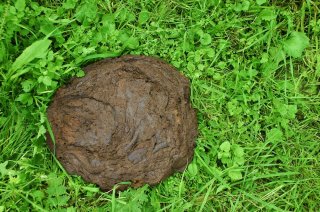
Project
Microbiome programme
In a circular economy, animal and plant materials are used as raw material for new products. Animal derived materials such as manure and feather/bone meal are used as fertilizer, and on the other hand plant-based products can be part of the animal diet as a more sustainable protein source. In a circular system where there is reuse of materials there can be risks, such as transmission of antibiotic resistance genes and introduction of diseases, but also benefits, for instance nutrient enrichment of arable soils.
The whole system should self-regulate to endure disturbances, as diseases and re-used materials, while maintaining its functions and health, the so called ecosystem resilience, term that defines equally to animal as well as plants and their surrounding environment. Each compartment needs to be healthy by itself and harbours its own microbiome, whereas specific microorganisms can be transferred together with materials that move along the circular system.
Microbiomes are connected by the transfer of microorganisms and the order of transmission between the different compartments (soil, plant, animal) disproportionate influence later microbiome community assembly in a circular production model, therefore they are a suitable target for increasing health and resilience in a circular scheme.
In this project we will investigate the relation between the microbiomes from each compartment and their effect on plant/animal resilience and the community assembly when circular materials will be used, and we will investigate the possible transmission of groups of micro-organisms between different ecosystems. Furthermore we will use one standardized but still flexible bioinformatic framework for plant, soil and animal microbiome analyses to compare systems, to learn from each other and to standardize analysis between the different science groups.
Abstract
In a circular production system, where materials are being transferred through different compartments, the microbiome will connect these different compartments and microbes will circulate across the different ecosystems, bringing in eventual beneficial and detrimental features. It is of importance to have a resilient system, thus also the different compartments of a circular model (in this case animal/soil/plant) should be resilient as well, they must stay healthy and able to recover from perturbations, therefore reducing the use of antibiotics and pesticides. Diverse components of the animal diet (largely consisting of plant materials) can affect animal resilience, either directly or indirectly, via the gut microbiome and intestinal immune development, and animal behaviour. This occurs by the microbiome-gut-brain-immune axis. Thus animal health and welfare in relation with the microbiome are influenced by nutrients (and therefore by circular feed products), both in a positive and negative way. Furthermore the use of animal products improves soil quality and hence can affect crop resilience against abiotic and biotic stressors such as soil-borne pathogens. This is where the soil and plant microbiome plays an important role. When the system is not resilient/healthy, antibiotics and pesticides are needed, and antibiotic residues and antibiotic resistance potential can circulate from animals via manure to soil and plants. This constant selection pressure remains on natural microbiomes consequently increasing antibiotic resistances in the circular production chain from animal to vegetable food and feed.